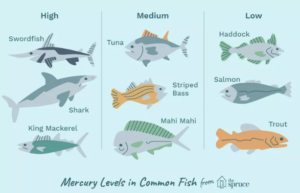Seafood lovers often choose rockfish for its mild flavor and versatility. However, concerns about mercury contamination in fish have made it essential to understand the safety of consuming certain species. So, is rockfish high in mercury, and is it safe to enjoy regularly? This article dives into the details, using data and practical tips to help you make informed dietary choices.

Understanding Mercury in Seafood
Mercury, particularly in the form of methylmercury, accumulates in fish through oceanic food chains. Larger and longer-living fish, such as tuna or swordfish, typically have higher mercury levels.
For better seafood safety, refer to the FDA Mercury Guidelines, which categorize fish based on mercury content. Choosing species like rockfish allows consumers to balance health benefits with reduced risks. Additionally, sustainable fishing practices, as highlighted by NOAA’s Sustainable Fishing Practices, can help manage mercury levels in seafood while preserving marine ecosystems.

What Makes Rockfish Unique?
Rockfish encompasses a group of fish species predominantly found in the Pacific Ocean. Known for its firm texture and subtle taste, rockfish is a nutrient-dense choice, providing:
- Omega-3 fatty acids to support heart health.
- High-quality protein for muscle maintenance.
- Key vitamins like B12 and D for overall wellness.
If you’re interested in elevating your culinary experience, check out Perfecting Your Rockfish Recipes for delicious preparation tips. Whether baked, grilled, or sautéed, rockfish is as nutritious as it is flavorful.


Mercury Levels in Rockfish: The Facts
Rockfish generally falls into the moderate mercury category. While not as low in mercury as salmon or cod, it is safer than larger predators like tuna. Here are some insights:
- Rockfish is safe for most people when consumed 1-2 times per week.
- It offers a balance between nutritional benefits and manageable mercury exposure.
For more information on choosing safer fish, visit the Environmental Working Group’s Seafood Guide.
Health Risks of Mercury Exposure
Understanding the risks associated with methylmercury is vital, especially for vulnerable groups:
- Pregnant women and children: Mercury can harm neurological development.
- Adults: Long-term exposure may impact cardiovascular and nervous system health.
To mitigate these risks, incorporate a mix of low-mercury fish into your diet. For broader insights into fish safety, read Fish to Avoid Eating for a comprehensive guide on species with elevated mercury levels.
Tips for Safely Enjoying Rockfish
To savor rockfish responsibly:
- Limit consumption to 1-2 servings weekly to stay within safe mercury thresholds.
- Diversify your seafood choices by including low-mercury options like trout or scallops.
- Use sustainable recipes that emphasize fresh, responsibly sourced ingredients.
Environmental Working Group’s Seafood Guide – Anchor text: « Environmental Working Group’s Seafood Guide. »
Conclusion:
While rockfish contains moderate levels of mercury, it remains a nutritious and sustainable choice for most seafood enthusiasts. By answering the question « is rockfish high in mercury » and following guidelines like those from the FDA Mercury Guidelines, you can enjoy this fish as part of a balanced diet.
